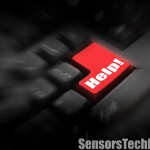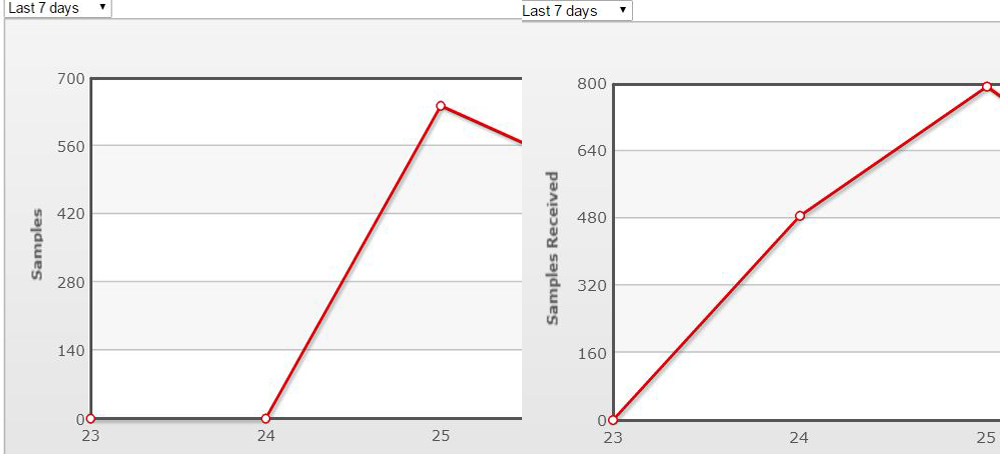 The Lodback variants are malware commonly referred as Worms. They were discovered recently, and some users report them to infect their systems. The specifics that differ this malware from others are that it focuses mainly on flash drive data. What the worm may do is replicate malicious files that could hide the flash drive content and even though some security software detects and removes them, the procedure repeats itself if another USB flash drive is inserted.
The Lodback variants are malware commonly referred as Worms. They were discovered recently, and some users report them to infect their systems. The specifics that differ this malware from others are that it focuses mainly on flash drive data. What the worm may do is replicate malicious files that could hide the flash drive content and even though some security software detects and removes them, the procedure repeats itself if another USB flash drive is inserted.
WORM/Lodbak.Gen2 and WORM/LNK.Lodbak.Gen – How Do They Work?
Worm/Lodback is a standard worm with small impact on security. However, it has been classified as a worm, which means that it may replicate and eventually devastate a PC. Recent statistics from Avira show us number of infections per day on user PCs:
Here we see a comparison between the two variants of Lodbak worm and the steady growth of its infections, and this data was sampled after the worm was discovered. These statistics are only for one antivirus program, and the actual number of the affected systems might be much higher since it is not known with certainty how many systems had the worm before that. This is the reason it is advisable to create several layers of protection.
According to Kaspersky’s security report most of the computer worms are spread in the following way:
- Through attached files in email messages.
- By hotlink directing to an FTP Source or web pages.
- Via chat messages on messaging services (Skype, IRC, ICQ etc.).
- Using online shared files (p2p).
- In the form of network packers, by execution of a code to activate the worm.
Once on the computer, the worm may initiate scripts to replicate various files with the sole purpose of possibly taking over important System files and establishing a link from the user PC to its developer’s systems. After such procedure is done, the cyber-criminal using the worm, may infect the PC with Viruses that may corrupt some of the computer’s files. Also he may insert a Trojan horse which can provide him full control over the PC. In some cases they may deploy Ransomware that could encrypt important user files, demanding ransom from their owner.
When a worm infects several computers, they may become ‘zombie’ systems that are a part of the hacker’s controlled network. Such networks are referred to as botnets and the opportunities they may open up to the attackers vary. They may use them for financial profits, infect other systems via the zombie PC’s, or if the cyber crook decides, he may destroy all of the computers simultaneously. This means that if you are on a local network (in most cases businesses), all of the computers in the network might be wiped out of their data
WORM/Lodbak.Gen2 and WORM/LNK.Lodbak.Gen – How to Remove Fully?
In case you experience symptoms, similar to the ones illustrated above, bear in mind that there is a chance you might have these or other worms installed on your computer. If you are convinced you do, it is recommended to immediately look for professional software that will detect, remove and quarantine all of the affected files without compromising your system and also provide active protection against future threats.

Spy Hunter scanner will only detect the threat. If you want the threat to be automatically removed, you need to purchase the full version of the anti-malware tool.Find Out More About SpyHunter Anti-Malware Tool / How to Uninstall SpyHunter
Preparation before removing WORM/Lodbak.Gen2 and WORM/LNK.Lodbak.Gen.
Before starting the actual removal process, we recommend that you do the following preparation steps.
- Make sure you have these instructions always open and in front of your eyes.
- Do a backup of all of your files, even if they could be damaged. You should back up your data with a cloud backup solution and insure your files against any type of loss, even from the most severe threats.
- Be patient as this could take a while.
- Scan for Malware
- Fix Registries
- Remove Virus Files
Step 1: Scan for WORM/Lodbak.Gen2 and WORM/LNK.Lodbak.Gen with SpyHunter Anti-Malware Tool



Step 2: Clean any registries, created by WORM/Lodbak.Gen2 and WORM/LNK.Lodbak.Gen on your computer.
The usually targeted registries of Windows machines are the following:
- HKEY_LOCAL_MACHINE\Software\Microsoft\Windows\CurrentVersion\Run
- HKEY_CURRENT_USER\Software\Microsoft\Windows\CurrentVersion\Run
- HKEY_LOCAL_MACHINE\Software\Microsoft\Windows\CurrentVersion\RunOnce
- HKEY_CURRENT_USER\Software\Microsoft\Windows\CurrentVersion\RunOnce
You can access them by opening the Windows registry editor and deleting any values, created by WORM/Lodbak.Gen2 and WORM/LNK.Lodbak.Gen there. This can happen by following the steps underneath:


 Tip: To find a virus-created value, you can right-click on it and click "Modify" to see which file it is set to run. If this is the virus file location, remove the value.
Tip: To find a virus-created value, you can right-click on it and click "Modify" to see which file it is set to run. If this is the virus file location, remove the value.Step 3: Find virus files created by WORM/Lodbak.Gen2 and WORM/LNK.Lodbak.Gen on your PC.
1.For Windows 8, 8.1 and 10.
For Newer Windows Operating Systems
1: On your keyboard press + R and write explorer.exe in the Run text box and then click on the Ok button.

2: Click on your PC from the quick access bar. This is usually an icon with a monitor and its name is either “My Computer”, “My PC” or “This PC” or whatever you have named it.

3: Navigate to the search box in the top-right of your PC's screen and type “fileextension:” and after which type the file extension. If you are looking for malicious executables, an example may be "fileextension:exe". After doing that, leave a space and type the file name you believe the malware has created. Here is how it may appear if your file has been found:

N.B. We recommend to wait for the green loading bar in the navigation box to fill up in case the PC is looking for the file and hasn't found it yet.
2.For Windows XP, Vista, and 7.
For Older Windows Operating Systems
In older Windows OS's the conventional approach should be the effective one:
1: Click on the Start Menu icon (usually on your bottom-left) and then choose the Search preference.

2: After the search window appears, choose More Advanced Options from the search assistant box. Another way is by clicking on All Files and Folders.

3: After that type the name of the file you are looking for and click on the Search button. This might take some time after which results will appear. If you have found the malicious file, you may copy or open its location by right-clicking on it.
Now you should be able to discover any file on Windows as long as it is on your hard drive and is not concealed via special software.
WORM/Lodbak.Gen2 and WORM/LNK.Lodbak.Gen FAQ
What Does WORM/Lodbak.Gen2 and WORM/LNK.Lodbak.Gen Trojan Do?
The WORM/Lodbak.Gen2 and WORM/LNK.Lodbak.Gen Trojan is a malicious computer program designed to disrupt, damage, or gain unauthorized access to a computer system. It can be used to steal sensitive data, gain control over a system, or launch other malicious activities.
Can Trojans Steal Passwords?
Yes, Trojans, like WORM/Lodbak.Gen2 and WORM/LNK.Lodbak.Gen, can steal passwords. These malicious programs are designed to gain access to a user's computer, spy on victims and steal sensitive information such as banking details and passwords.
Can WORM/Lodbak.Gen2 and WORM/LNK.Lodbak.Gen Trojan Hide Itself?
Yes, it can. A Trojan can use various techniques to mask itself, including rootkits, encryption, and obfuscation, to hide from security scanners and evade detection.
Can a Trojan be Removed by Factory Reset?
Yes, a Trojan can be removed by factory resetting your device. This is because it will restore the device to its original state, eliminating any malicious software that may have been installed. Bear in mind that there are more sophisticated Trojans that leave backdoors and reinfect even after a factory reset.
Can WORM/Lodbak.Gen2 and WORM/LNK.Lodbak.Gen Trojan Infect WiFi?
Yes, it is possible for a Trojan to infect WiFi networks. When a user connects to the infected network, the Trojan can spread to other connected devices and can access sensitive information on the network.
Can Trojans Be Deleted?
Yes, Trojans can be deleted. This is typically done by running a powerful anti-virus or anti-malware program that is designed to detect and remove malicious files. In some cases, manual deletion of the Trojan may also be necessary.
Can Trojans Steal Files?
Yes, Trojans can steal files if they are installed on a computer. This is done by allowing the malware author or user to gain access to the computer and then steal the files stored on it.
Which Anti-Malware Can Remove Trojans?
Anti-malware programs such as SpyHunter are capable of scanning for and removing Trojans from your computer. It is important to keep your anti-malware up to date and regularly scan your system for any malicious software.
Can Trojans Infect USB?
Yes, Trojans can infect USB devices. USB Trojans typically spread through malicious files downloaded from the internet or shared via email, allowing the hacker to gain access to a user's confidential data.
About the WORM/Lodbak.Gen2 and WORM/LNK.Lodbak.Gen Research
The content we publish on SensorsTechForum.com, this WORM/Lodbak.Gen2 and WORM/LNK.Lodbak.Gen how-to removal guide included, is the outcome of extensive research, hard work and our team’s devotion to help you remove the specific trojan problem.
How did we conduct the research on WORM/Lodbak.Gen2 and WORM/LNK.Lodbak.Gen?
Please note that our research is based on an independent investigation. We are in contact with independent security researchers, thanks to which we receive daily updates on the latest malware definitions, including the various types of trojans (backdoor, downloader, infostealer, ransom, etc.)
Furthermore, the research behind the WORM/Lodbak.Gen2 and WORM/LNK.Lodbak.Gen threat is backed with VirusTotal.
To better understand the threat posed by trojans, please refer to the following articles which provide knowledgeable details.


